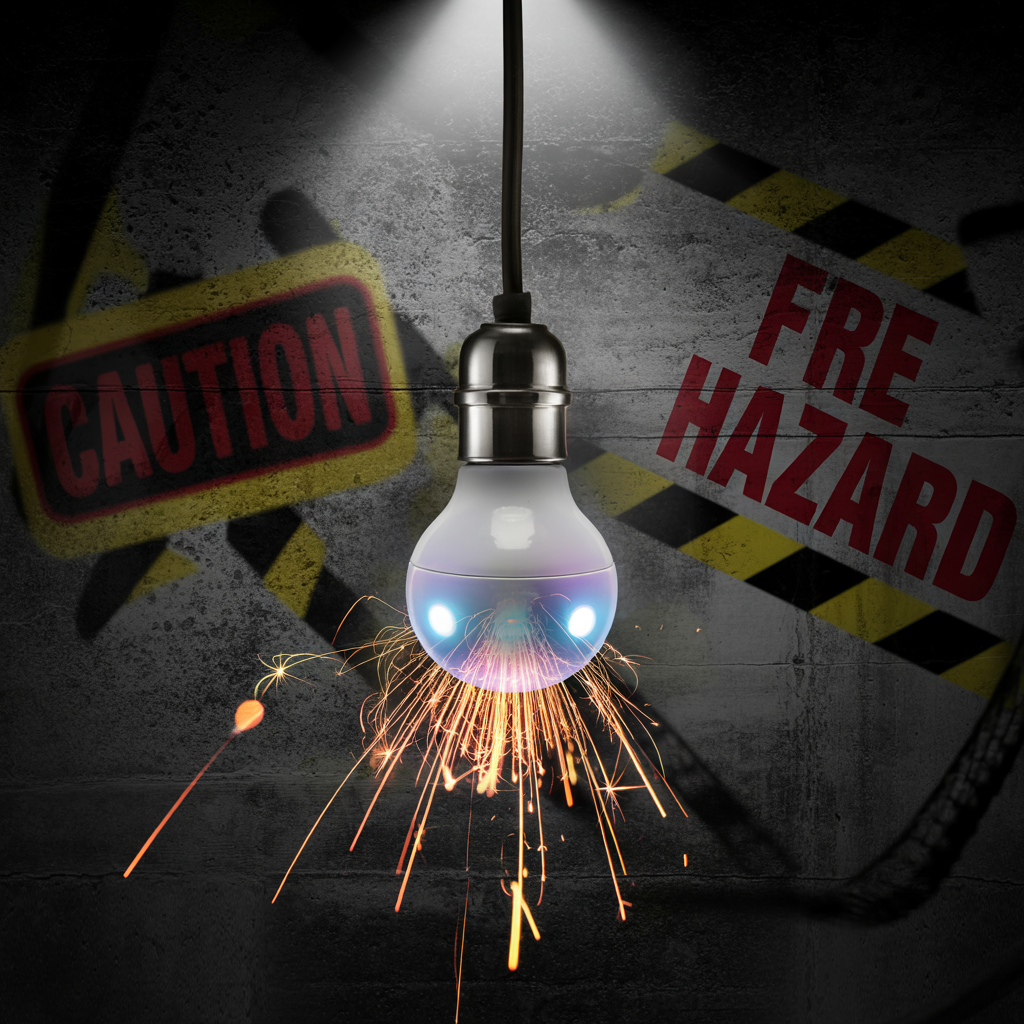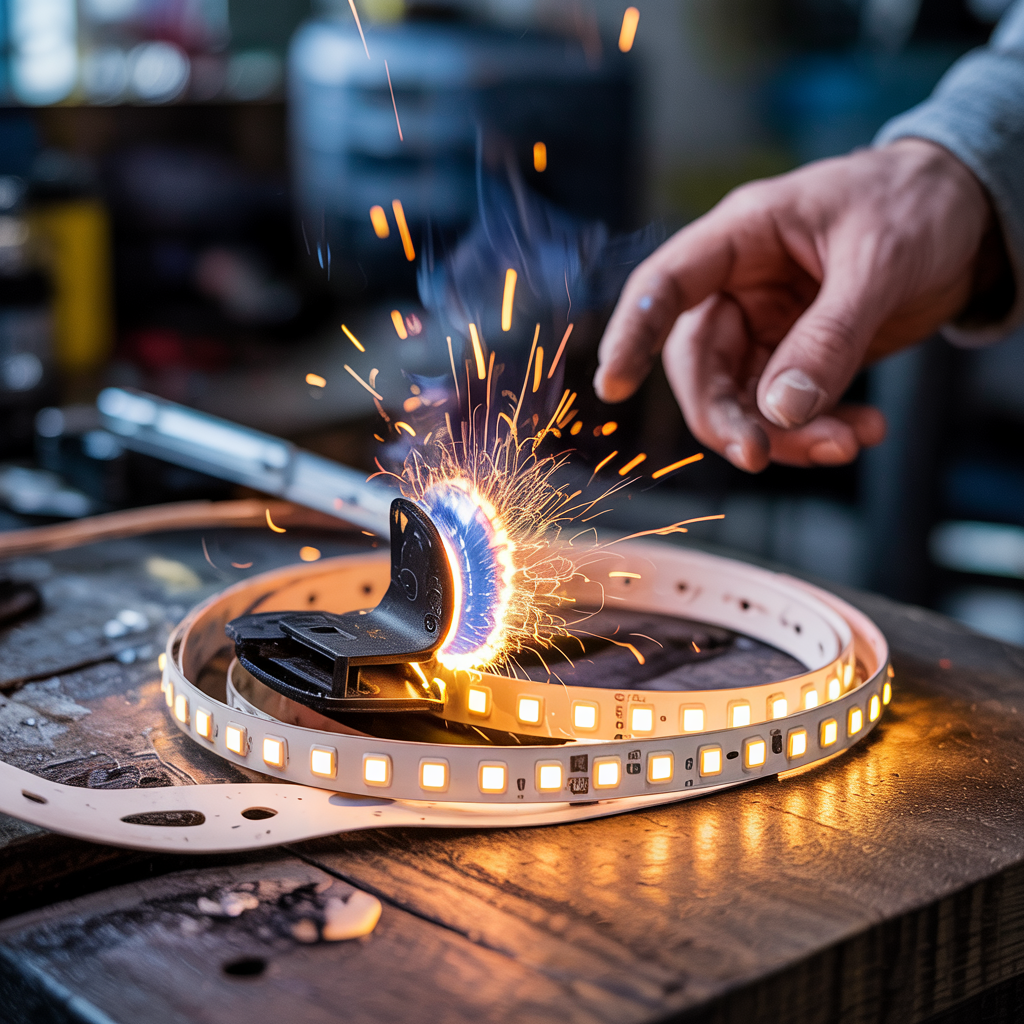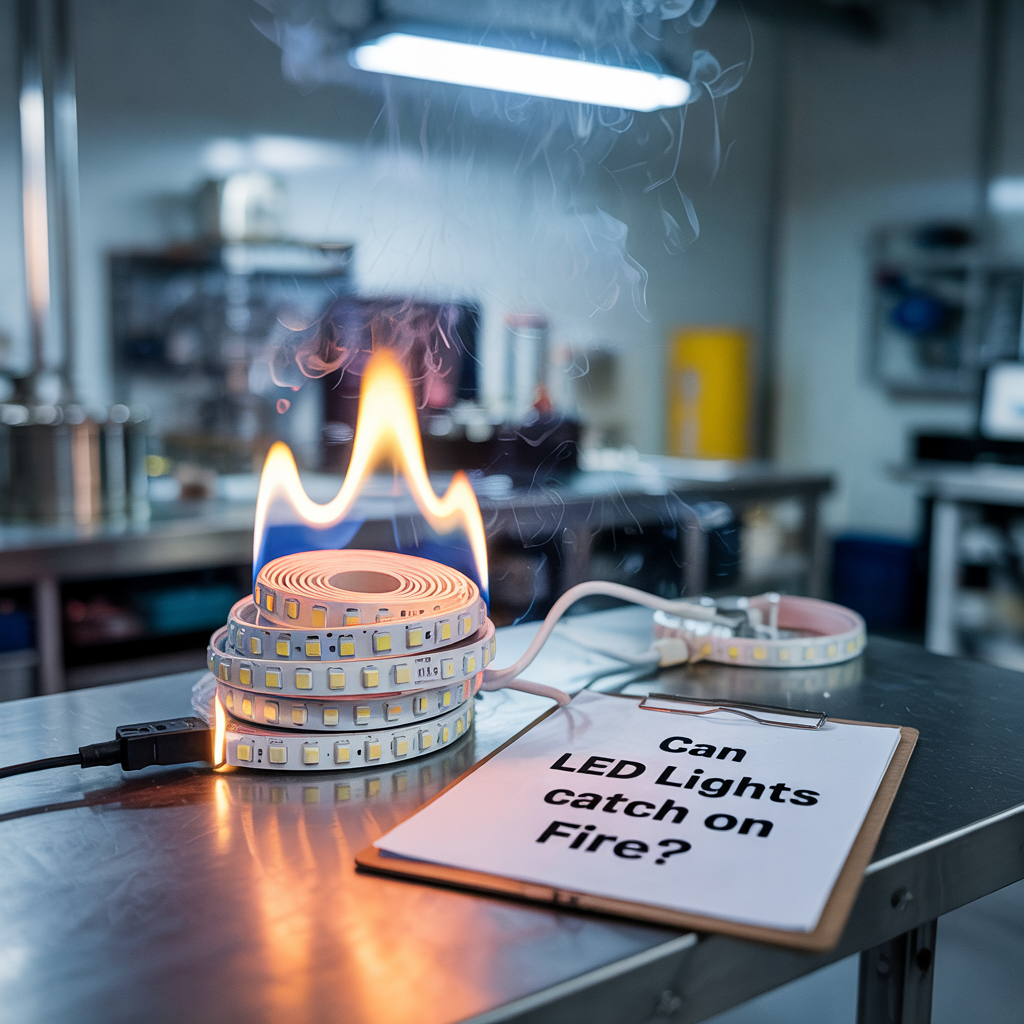LED Lights And Fire Risk: Can LED Lights Catch on Fire?
LED lights have revolutionized home and commercial lighting, offering energy efficiency and long lifespans. But a question often arises: Can LED lights catch on fire? This comprehensive guide will delve into the potential fire hazards associated with LED lighting, examining the causes, prevention methods, and safety measures to ensure your home and business remain protected….
LED lights have revolutionized home and commercial lighting, offering energy efficiency and long lifespans. But a question often arises: Can LED lights catch on fire? This comprehensive guide will delve into the potential fire hazards associated with LED lighting, examining the causes, prevention methods, and safety measures to ensure your home and business remain protected. We’ll explore the components of LED lights, common failure points, and best practices for safe installation and usage. You’ll learn how to identify potential risks and take proactive steps to mitigate them.
LED lights themselves are very unlikely to catch fire because they produce very little heat. However, poor wiring, faulty power supplies, or overheating due to enclosed fixtures can pose fire risks. Always use certified LEDs and install them according to manufacturer guidelines.
Can LED Lights Catch on Fire?

The Driver: Powering the LED
The driver is an electronic circuit that regulates the voltage and current supplied to the LED chip. A malfunctioning driver can lead to overheating, potentially igniting nearby materials.
The Heat Sink: Managing Heat Dissipation
Most LED lights incorporate a heat sink—a metal component designed to dissipate the heat generated by the LED chip. An inadequate or improperly functioning heat sink can cause excessive heat buildup, increasing the risk of fire.
The Housing and Wiring: Protecting the Components
The housing and wiring protect the internal components and ensure proper electrical connections. However, damaged or faulty wiring can create a fire hazard.
Read More: Are LED Lights Affective for Redness? A Scientific Answer
What Causes LED Lights to Catch Fire?

Overheating: The Primary Culprit
The most common cause of LED light fires is overheating. This can be due to several factors, including a faulty driver, inadequate heat dissipation, or poor ventilation.
Electrical Faults: Short Circuits and Overloads
Short circuits and electrical overloads can generate excessive heat, leading to ignition. Damaged wiring, loose connections, and improper installation can all contribute to electrical faults.
External Factors: Exposure to Flammable Materials
Placing LED lights near flammable materials, such as curtains, furniture, or insulation, significantly increases the risk of fire. Heat generated by the light can ignite these materials.
Read More: How to Dim LED Lights? Dim Your Light Properly
Factors Affecting Fire Risk
Quality of Components: Choosing Reliable Products
The quality of LED lights varies significantly. Using high-quality components from reputable manufacturers minimizes the risk of failure and fire hazards. Look for certifications like UL or ETL.
Proper Installation: Adhering to Safety Guidelines
Incorrect installation is a major contributor to fire risk. Always follow the manufacturer’s instructions and, if necessary, consult a qualified electrician for complex installations.
Ventilation: Ensuring Adequate Airflow
Proper ventilation is crucial for dissipating heat. Ensure adequate airflow around LED lights, especially in enclosed spaces or fixtures.
Read More: 15 Excellent Staircase Ceiling Lighting Ideas In This Year
Preventing LED Light Fires

Regular Inspections: Identifying Potential Problems Early
Regularly inspect LED lights for signs of damage, overheating, or loose connections. Replace any damaged components immediately.
Proper Ventilation: Maximizing Heat Dissipation
Ensure adequate ventilation around LED lights to prevent excessive heat buildup. Avoid placing them in enclosed spaces or near flammable materials.
Using Appropriate Fixtures: Choosing Suitable Housings
Use fixtures designed for the specific type and wattage of LED lights. This ensures proper heat dissipation and prevents overheating.
Identifying Signs of Overheating
Excessive Heat: Feeling Abnormal Temperatures
If an LED light feels unusually hot to the touch, it’s a clear sign of overheating. Turn it off immediately and investigate the cause.
Discoloration: Changes in Appearance
Discoloration of the housing or components may indicate overheating. This can be a sign of internal damage or malfunction.
Unusual Noises: Unusual Sounds
Unusual buzzing, crackling, or humming sounds from the light can indicate a problem with the driver or other components.
Comparing LED Lights to Other Lighting Options
Incandescent Bulbs: Higher Fire Risk
Incandescent bulbs generate significant heat and pose a higher fire risk than LEDs. They are more prone to overheating and can ignite flammable materials.
Fluorescent Lights: Lower Fire Risk, but Different Hazards
Fluorescent lights pose a lower fire risk than incandescent bulbs but can contain mercury, posing environmental concerns if broken.
Halogen Bulbs: Moderate Fire Risk
Halogen bulbs generate considerable heat and carry a moderate fire risk. They are less energy-efficient than LEDs.
Choosing Safe LED Lights
Certifications: Look for Safety Standards
Look for certifications from recognized safety organizations like UL (Underwriters Laboratories) or ETL (Intertek). These certifications indicate that the product meets safety standards.
Manufacturer Reputation: Prioritizing Quality
Choose LED lights from reputable manufacturers with a proven track record of quality and safety. Read reviews and compare different brands.
Warranty: Ensuring Product Reliability
A good warranty indicates the manufacturer’s confidence in their product’s reliability and provides recourse in case of failure.
Troubleshooting and Maintenance
Checking Wiring Connections: Ensuring Proper Connections
Regularly inspect wiring connections for looseness or damage. Tighten any loose connections and replace damaged wiring.
Cleaning LED Lights: Removing Dust Buildup
Dust buildup can impede heat dissipation. Regularly clean LED lights to maintain proper airflow and prevent overheating.
Replacing Faulty Components: Addressing Malfunctions Promptly
Replace any faulty components, such as the driver or heat sink, as soon as possible. Don’t attempt repairs unless you have the necessary expertise.
The Role of Heat Sinks in Preventing Fires
Understanding Heat Sink Function: Dissipating Heat Efficiently
Heat sinks are designed to dissipate heat generated by the LED chip. Their effectiveness depends on their size, material, and design.
Proper Heat Sink Installation: Ensuring Optimal Performance
Ensure proper installation of the heat sink to maximize its effectiveness. Poor contact between the heat sink and the LED chip can lead to overheating.
Heat Sink Materials: Choosing Effective Materials
Different materials have varying thermal conductivity. Aluminum is a common and effective material for heat sinks.
Safe Disposal of LED Lights
Recycling Considerations: Environmentally Responsible Disposal
LED lights contain various components that require proper recycling. Check with your local waste management authority for recycling options.
Hazardous Waste: Handling Potential Hazards
Some components of LED lights may be considered hazardous waste. Follow appropriate handling procedures to prevent environmental contamination.
Frequently Asked Questions
What are the most common causes of LED light fires?
Overheating due to faulty drivers, inadequate heat dissipation, or poor ventilation is the most common cause. Electrical faults, such as short circuits and overloads, also contribute significantly. Placement near flammable materials exacerbates the risk.
How can I tell if my LED light is overheating?
Signs of overheating include excessive heat to the touch, discoloration of the housing or components, and unusual noises such as buzzing or crackling. If you notice any of these signs, turn off the light immediately.
Are all LED lights equally safe?
No, the quality and safety of LED lights vary significantly. Choosing reputable brands with certifications like UL or ETL is crucial. Always check for a warranty to ensure product reliability.
How often should I inspect my LED lights?
Regular inspections are recommended. At least once a year or more frequently in high-use areas or if you notice any unusual behavior.
What should I do if I suspect an LED light is faulty?
Turn off the light immediately and unplug it. Do not attempt any repairs unless you are qualified. Replace the light with a new one from a reputable manufacturer.
Final Thoughts
While LED lights offer numerous advantages, understanding their potential fire hazards is crucial for safety. By choosing high-quality lights, ensuring proper installation and ventilation, and performing regular inspections, you can significantly minimize the risk of fire. Remember, proactive measures are key to preventing accidents. Regularly checking your LED lights and replacing faulty components promptly will ensure a safe and well-lit environment. Prioritizing safety ensures a long-lasting and trouble-free experience with your LED lighting. Don’t risk it—choose safety and quality.

